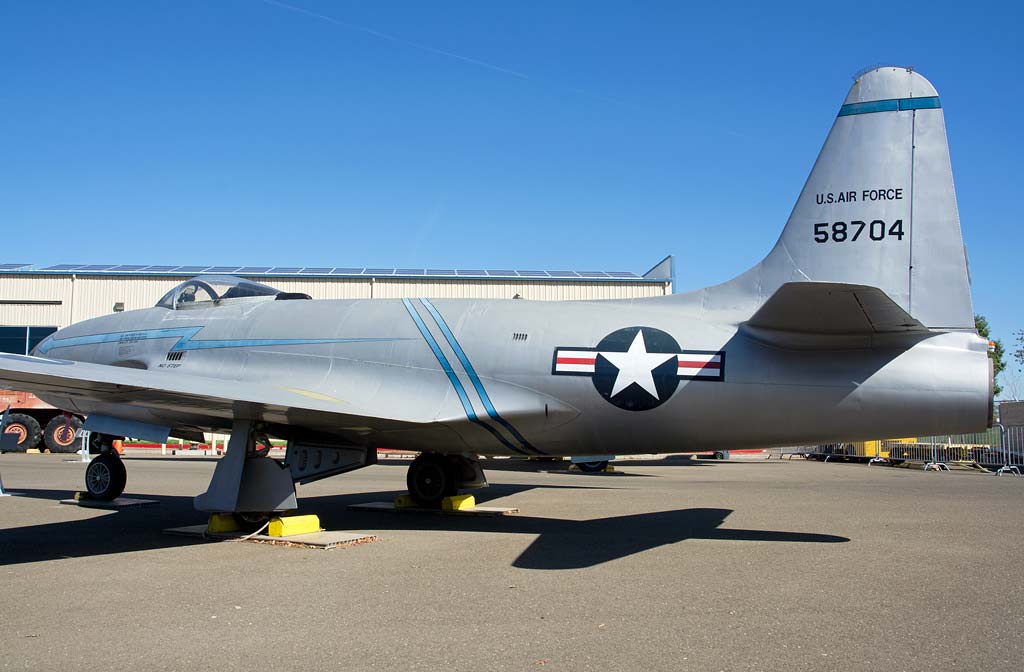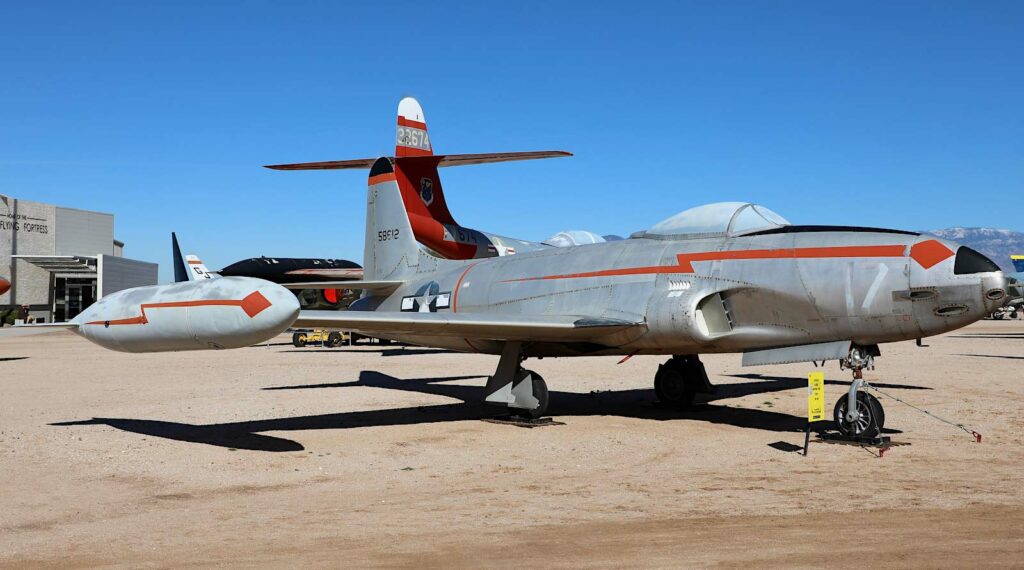The Lockheed P-80 Shooting Star, America’s first operational jet fighter, known for its speed and agility, powered by a single Allison J33 turbojet.
This article provides a comprehensive overview of the Lockheed P-80 Shooting Star, the first operational jet fighter of the United States. It details the historical context of its development during WWII, its innovative design, performance characteristics, and military usage. The development section explains the strategic necessity for a jet fighter and the project’s objectives. The design portion highlights the technical aspects and the balance of innovation with challenges. Performance analysis compares the P-80 with contemporaries, showcasing its capabilities. The military use section reviews its combat history, including operational roles and impact, concluding with the aircraft’s legacy in aviation.
The Lockheed P-80 Shooting Star marked a significant milestone in American aviation as the first jet fighter to enter operational service with the United States Army Air Forces (USAAF), signaling the advent of a new era in aerial combat.

History of the Development of the Lockheed P-80 Shooting Star:
In the context of World War II, the need for superior air superiority led to the development of the P-80. As jet propulsion emerged as a breakthrough in aircraft technology, the United States, observing developments in German and British jet aircraft, initiated the development of its own jet fighter. Lockheed, under the guidance of designer Clarence “Kelly” Johnson, undertook the project.
The program aimed to deliver a high-speed jet fighter that could outperform existing piston-engine fighters. Launched in 1943, the P-80’s development was marked by urgency, leading to its first flight on January 8, 1944. The P-80 did not have a NATO nickname, as it predates the formation of NATO.
Design of the Lockheed P-80 Shooting Star:
The design of the P-80 was a blend of aerodynamic efficiency and practical engineering. It featured a wingspan of 11.85 meters (38 feet 10 inches) and a length of 10.49 meters (34 feet 5 inches). The aircraft was powered by an Allison J33 turbojet, a derivative of the British de Havilland Goblin.
The P-80’s design included a straight wing, tricycle landing gear, and an internal weapons bay, innovations that marked a departure from traditional piston-engine fighters. The use of a single jet engine posed challenges in reliability and maintenance but offered superior performance.
Performance of the Lockheed P-80 Shooting Star:
In terms of performance, the P-80 was a leap forward. It could achieve a top speed of 966 km/h (600 mph) and had a service ceiling of 14,630 meters (48,000 feet). Its range was approximately 1,930 kilometers (1,200 miles).
Compared to contemporaries such as the German Me 262 and British Gloster Meteor, the P-80 was competitive in speed and agility, though it entered service too late to significantly impact WWII.

Military Use and Combat of the Lockheed P-80 Shooting Star:
The P-80 Shooting Star saw extensive service in the post-WWII era, most notably in the Korean War. It was armed with six .50 caliber (12.7 mm) M2 Browning machine guns and could carry bombs and rockets for ground-attack missions.
In Korea, the P-80 engaged in various roles, from air superiority to ground support. It faced competition from Soviet MiG-15 jets, leading to the development of more advanced jet fighters like the North American F-86 Sabre.
The P-80 was also exported to several countries and influenced the development of jet fighter technology worldwide. It was eventually phased out of US service in favor of more advanced aircraft but continued to see use in other countries for some years.
The Lockheed P-80 Shooting Star holds a significant place in aviation history as the first American jet fighter to see operational service. Its development marked the transition of the United States into the jet age, laying the groundwork for future advancements in military aviation. While it was soon surpassed by more advanced designs, the P-80’s legacy as a trailblazer in jet propulsion and fighter design remains an important chapter in the story of aerial combat.
Back to the Fighter Jet section.